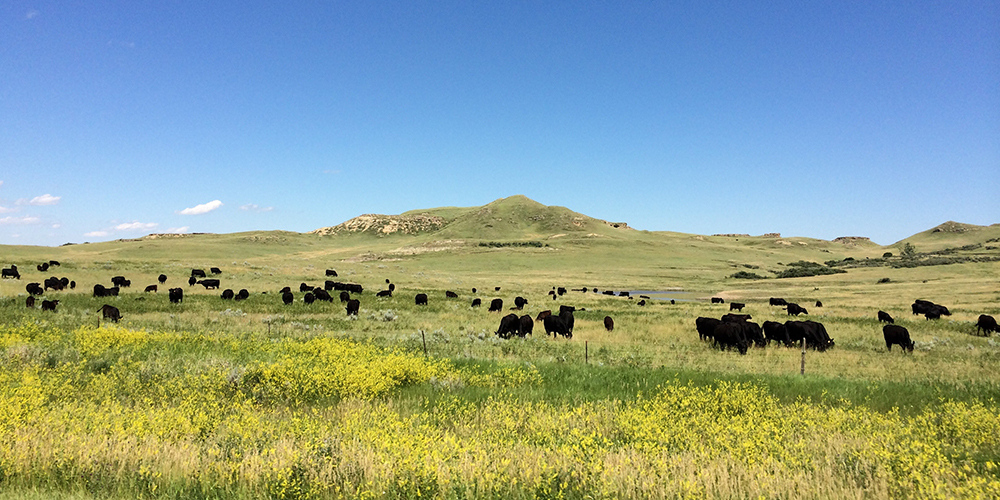Understanding Livestock Threat Defense (LRP) Insurance: A Comprehensive Overview
Navigating the world of livestock threat security (LRP) insurance can be an intricate venture for several in the farming market. This kind of insurance policy provides a safety and security web against market changes and unexpected conditions that can impact animals manufacturers. By comprehending the intricacies of LRP insurance coverage, producers can make educated decisions that might protect their operations from economic risks. From exactly how LRP insurance policy works to the different coverage options offered, there is much to reveal in this extensive overview that can potentially shape the method animals manufacturers come close to risk administration in their organizations.

Exactly How LRP Insurance Coverage Works
Periodically, recognizing the mechanics of Livestock Danger Security (LRP) insurance can be intricate, but breaking down how it works can offer clearness for herdsmans and farmers. LRP insurance is a risk management tool developed to safeguard livestock producers against unexpected price decreases. It's important to keep in mind that LRP insurance policy is not an earnings warranty; rather, it concentrates exclusively on cost risk protection.
Eligibility and Protection Options

When it pertains to protection options, LRP insurance offers producers the adaptability to pick the insurance coverage degree, protection duration, and endorsements that finest match their threat management needs. Insurance coverage levels usually range from 70% to 100% of the expected ending value of the insured livestock. Manufacturers can likewise select insurance coverage periods that straighten with their manufacturing cycle, whether they are insuring feeder livestock, fed livestock, swine, or lamb. Endorsements such as cost risk defense can further tailor protection to shield versus negative market variations. By recognizing the eligibility criteria and protection choices available, animals producers can make enlightened decisions to handle risk properly.
Advantages And Disadvantages of LRP Insurance Coverage
When examining Animals Risk Protection (LRP) insurance coverage, it is necessary for animals manufacturers to evaluate the drawbacks and benefits intrinsic in this threat administration tool.

One of the key advantages of LRP insurance is its ability to offer security versus a decline in livestock costs. Furthermore, LRP insurance policy supplies a degree of adaptability, permitting manufacturers to personalize insurance coverage degrees and plan periods to suit their particular demands.
However, there are likewise some disadvantages to take into consideration. One constraint of LRP insurance is that it does not shield against all kinds of risks, such as disease outbreaks or all-natural disasters. Costs can often be expensive, especially for manufacturers with big livestock herds. It is important for producers to carefully assess their specific danger exposure and financial scenario to figure out if LRP insurance coverage is the best danger administration device for their procedure.
Understanding LRP Insurance Policy Premiums

Tips for Making Best Use Of LRP Benefits
Optimizing the advantages of Livestock Danger Security (LRP) insurance needs strategic preparation and positive threat monitoring - Bagley Risk Management. To make the many of your LRP protection, consider the following suggestions:
Frequently Analyze Market Conditions: Remain educated regarding market patterns and cost variations in the animals industry. By keeping an eye on these factors, you can make enlightened decisions about when to buy LRP protection to secure versus prospective losses.
Establish Realistic Protection Levels: When selecting protection levels, consider your production costs, market value of animals, and possible threats - Bagley Risk Management. Establishing sensible protection levels makes sure that you are sufficiently safeguarded without overpaying for unnecessary insurance
Diversify Your Insurance Coverage: As opposed to depending entirely on LRP insurance, consider expanding your danger management strategies. Incorporating LRP with various other danger management devices such as futures agreements or choices can offer extensive coverage versus market uncertainties.
Evaluation and Adjust Coverage On a regular basis: As market problems transform, regularly examine your LRP insurance coverage to guarantee it lines up with your current threat visit our website exposure. Readjusting protection degrees and timing of purchases can help maximize your danger protection approach. By complying with these tips, you can optimize the benefits of LRP insurance policy and protect your animals operation versus unforeseen threats.
Final Thought
In conclusion, animals risk defense (LRP) insurance is a beneficial tool for farmers to take care of the financial threats associated with their animals operations. By recognizing exactly how LRP works, eligibility and protection alternatives, as well as the advantages and disadvantages of this insurance coverage, farmers can make enlightened decisions to protect their resources. By very carefully considering LRP costs and executing strategies to make best use of benefits, farmers can reduce prospective losses and make certain wikipedia reference the sustainability of their operations.
Animals producers interested in acquiring Animals Danger Defense (LRP) insurance can discover an array of eligibility criteria and coverage options tailored to their certain livestock procedures.When it comes to insurance coverage alternatives, LRP insurance offers producers the flexibility to choose the coverage level, coverage duration, and recommendations that ideal match their danger administration requirements.To understand the details of Animals Threat Security (LRP) insurance coverage completely, comprehending the elements influencing LRP insurance costs is crucial. LRP insurance costs are figured out by different elements, including the insurance coverage degree chosen, Read Full Article the expected rate of livestock at the end of the coverage duration, the kind of livestock being guaranteed, and the length of the coverage duration.Evaluation and Adjust Insurance Coverage Regularly: As market problems alter, regularly review your LRP coverage to guarantee it straightens with your present risk direct exposure.
Comments on “Safeguarding Success: Bagley Risk Management Services”